Have you ever encountered error codes on your GE dehumidifier and wondered what they meant and how to fix them? We understand the frustration that comes with seeing these codes, but don’t worry! We’re here to help you decode the mystery and get your dehumidifier back up and running. In this article, we will guide you through the most common GE dehumidifier error codes and provide you with practical solutions to fix them.
GE dehumidifiers are equipped with error code systems that indicate specific issues with the unit. These error codes include HI, LO, E1, and E4, among others. Each code signifies a different problem that may require a different approach to resolve.
Are you ready to dive into the world of GE dehumidifier error codes and learn how to fix them? Let’s get started!
Key Takeaways:
- GE dehumidifiers can display error codes such as HI, LO, E1, and E4.
- HI error code indicates a high room temperature, while LO error code indicates a low room temperature.
- E1 error code points to an issue with the humidity sensor, and E4 error code warns of a pump malfunction.
- To fix HI and LO error codes, adjust the temperature or wait for it to return to a normal range.
- For E1 error code, check sensor wire connections and replace the sensor if necessary.
Troubleshooting GE Dehumidifier Common Issues
When it comes to GE dehumidifiers, error codes are not the only issues that users may encounter. Understanding how to troubleshoot common problems can help resolve issues and ensure optimal performance. Here are some of the most common issues that users may face and solutions to address them:
1. The unit runs all the time
One common issue is when the dehumidifier runs continuously without reaching the desired humidity level. This can happen if the unit is too small for the space it is trying to dehumidify. Consider upgrading to a larger-capacity dehumidifier or reducing the moisture sources in the area.
2. Improper drainage
If the dehumidifier is not draining properly, it may lead to overflowing or stagnant water. Check the drain hose for clogs or kinks and ensure it is securely connected. Cleaning the drain pan and removing any debris can also help improve drainage.
3. The unit does not turn on
If the dehumidifier does not turn on, check the power supply and ensure it is properly connected. Test the outlet with another device to confirm if there is a power issue. If the problem persists, consult the user manual or contact technical support for further assistance.
4. Frost on the coil
Frost buildup on the coil can indicate low refrigerant levels or improper airflow. Clean or replace the air filters to improve airflow and prevent frost formation. If the issue persists, consider contacting a professional technician for refrigerant recharge.
5. Remote monitor not working
If the remote monitor is not functioning, check the batteries and ensure they are correctly inserted. If the batteries are fine, try repositioning the dehumidifier closer to the remote monitor to improve signal reception.
6. Ineffective moisture removal
If the dehumidifier is not effectively removing moisture from the air, it could be due to dirty filters or grills. Clean or replace the filters and grills to improve the dehumidification process. Also, consider adjusting the placement of the dehumidifier to optimize airflow.
Remember, these are general troubleshooting tips, and the specific steps may vary based on the model of your GE dehumidifier. Review the user manual or contact technical support for detailed instructions tailored to your unit.
Here’s an illustrative table summarizing the common issues and troubleshooting steps for GE dehumidifiers:
| Common Issue | Troubleshooting Steps |
|---|---|
| The unit runs all the time | Upgrade to a larger-capacity dehumidifier or reduce moisture sources |
| Improper drainage | Clean drain hose, check for clogs, and ensure proper connection |
| The unit does not turn on | Check power supply and connections |
| Frost on the coil | Clean or replace air filters, improve airflow |
| Remote monitor not working | Check batteries, improve signal reception |
| Ineffective moisture removal | Clean or replace filters and grills, optimize placement for airflow |
By following these troubleshooting tips, you can address common issues with your GE dehumidifier and ensure it functions optimally. However, if the problem persists or requires advanced repairs, it is recommended to seek professional assistance or contact GE technical support.
Guide to Maintaining and Repairing GE Dehumidifiers
Regular maintenance is crucial for preventing issues and extending the lifespan of your GE dehumidifier. By following a few simple steps, you can ensure that your device operates at its optimal level and provides efficient performance.
Maintenance Tips
1. Clean the air filters and grills regularly: Over time, dust, dirt, and debris can accumulate on the filters and grills of your dehumidifier, affecting its airflow and efficiency. To maintain optimal performance, regularly clean these components according to the manufacturer’s guidelines.
2. Check and clean the drain hose: Ensure that the drain hose is free from blockages and debris to prevent water from backing up and causing potential damage. Regularly inspect and clean the hose to ensure proper drainage.
3. Inspect the collection bucket and pump: If your dehumidifier is equipped with a collection bucket or pump, inspect it for any damage, cracks, or blockages. Clear any debris and ensure that the bucket or pump is properly functioning to avoid potential leaks or malfunctions.
Repair Guide
If your GE dehumidifier requires repair, following a step-by-step guide can help you address common issues. Here are a few common repairs and their solutions:
- Sensor Assembly: If your dehumidifier displays error codes related to the sensor, such as E1, you may need to replace the sensor assembly. Consult the user manual to locate the sensor and follow the provided instructions for replacement.
- User Interface Control Board: If the control panel of your dehumidifier is unresponsive or malfunctioning, the user interface control board may be the cause. To fix this issue, refer to the repair guide for your specific model and follow the steps to replace the control board.
- Electronic Control Board: If your dehumidifier fails to turn on or has intermittent power issues, the electronic control board may need replacement. Consult the repair guide to locate the control board and follow the provided instructions for replacement.
Note that performing these repairs may require basic electrical knowledge and tools. Always prioritize your safety and follow the recommended safety precautions outlined in the user manual. For more complex repairs or situations where you are unsure, it is advisable to consult professional technicians or contact the manufacturer’s technical support for guidance.
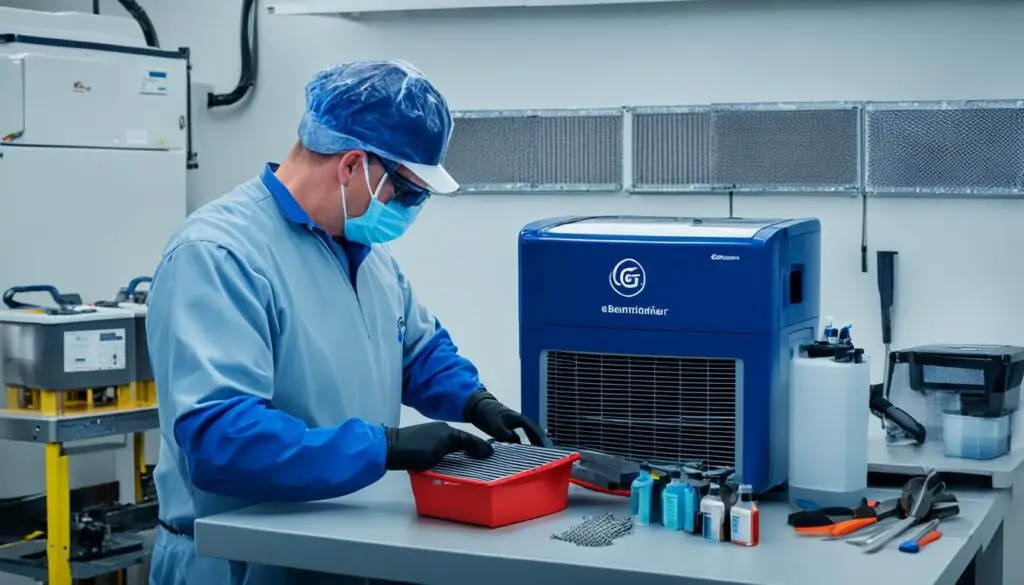
By following these maintenance tips and repair guides, you can keep your GE dehumidifier in optimal condition and ensure its longevity. Regular maintenance and timely repairs can significantly enhance the performance and efficiency of your device, allowing you to enjoy the benefits of a reliable and effective dehumidifier.
Conclusion
Troubleshooting GE dehumidifier error codes and common issues is essential for maintaining the optimal performance of your GE dehumidifier. By following the provided guidelines and tips, you can easily address these problems and ensure the efficient operation of your unit.
Regular maintenance is key to preventing issues and prolonging the lifespan of your GE dehumidifier. Cleaning the filters and grills regularly, checking the drainage system, and inspecting the components for any damage or blockage are crucial maintenance tasks. By incorporating these maintenance practices into your routine, you can avoid potential problems and enjoy the benefits of a reliable dehumidifier.
However, if you encounter more complex issues or the problems persist despite troubleshooting, it is advisable to seek professional assistance. Contacting the GE technical support team or consulting a professional technician will provide you with expert guidance and ensure that any necessary repairs are performed correctly.
In conclusion, by understanding and addressing GE dehumidifier error codes, conducting regular maintenance, and seeking professional help when needed, you can maintain the optimal performance of your dehumidifier and benefit from its reliable and efficient operation.
FAQ
What are some common GE dehumidifier error codes and how can I fix them?
Some common GE dehumidifier error codes include HI, LO, E1, and E4. HI error code indicates that the room temperature is higher than the operating temperature of the dehumidifier. LO error code indicates that the room temperature is below the operating range of the dehumidifier. To fix HI and LO error codes, adjust the temperature or wait until it returns to a normal range. E1 error code indicates an issue with the humidity sensor. Check the sensor wire connections and replace the sensor if necessary. E4 error code warns that the pump is full of water and not working properly. Ensure that the pump is properly plugged in, clean the pump if needed, and reset the unit. If the error code persists, it may indicate a faulty component that needs replacement. Contact technical support for further assistance.
What are some common issues with GE dehumidifiers and how can I troubleshoot them?
Some common issues with GE dehumidifiers include the unit running all the time, not draining properly, not turning on, frost on the coil, remote monitor not working, and not removing moisture effectively. The main causes for these issues can vary, such as the dehumidifier being too small for the space, faulty sensors, low refrigerant, wiring failure, and dirty filters or grills. Troubleshooting these issues typically involves checking for power supply, ensuring proper connections, cleaning filters and grills, and adjusting the placement of the dehumidifier. Refer to the user manual or contact technical support for specific troubleshooting steps based on the model of the GE dehumidifier.
How can I maintain and repair my GE dehumidifier?
Regular maintenance can help prevent issues and prolong the lifespan of GE dehumidifiers. Cleaning the air filters and grills regularly is important for efficient operation. Check and clean the drain hose and ensure proper drainage. Inspect the collection bucket and pump (if applicable) for any damage or blockage. If repair is needed, there are step-by-step repair guides available for common issues such as replacing the sensor assembly, user interface control board, and electronic control board. These repairs may require basic electrical knowledge and tools. Follow safety precautions and consult the user manual or professional technicians for complex repairs.
How can I troubleshoot GE dehumidifier error codes and common issues?
Troubleshooting GE dehumidifier error codes and common issues can often be done by following the provided guidelines and tips. Regular maintenance, such as cleaning filters and grills, checking drainage, and inspecting components, can help prevent problems and ensure optimal performance. For more complex repairs or persistent issues, it is recommended to contact technical support or seek professional assistance. By addressing error codes and maintaining the dehumidifier properly, users can enjoy the benefits of a reliable and efficient GE dehumidifier.

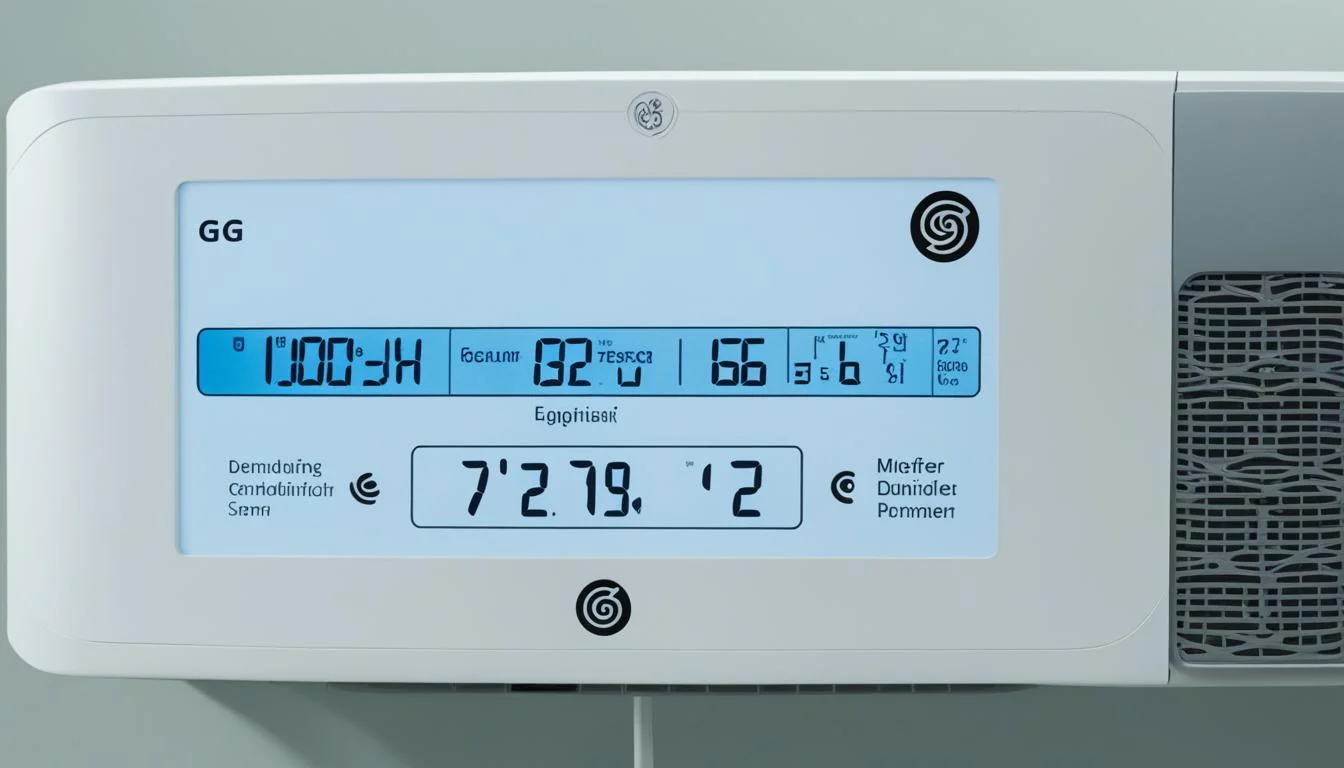
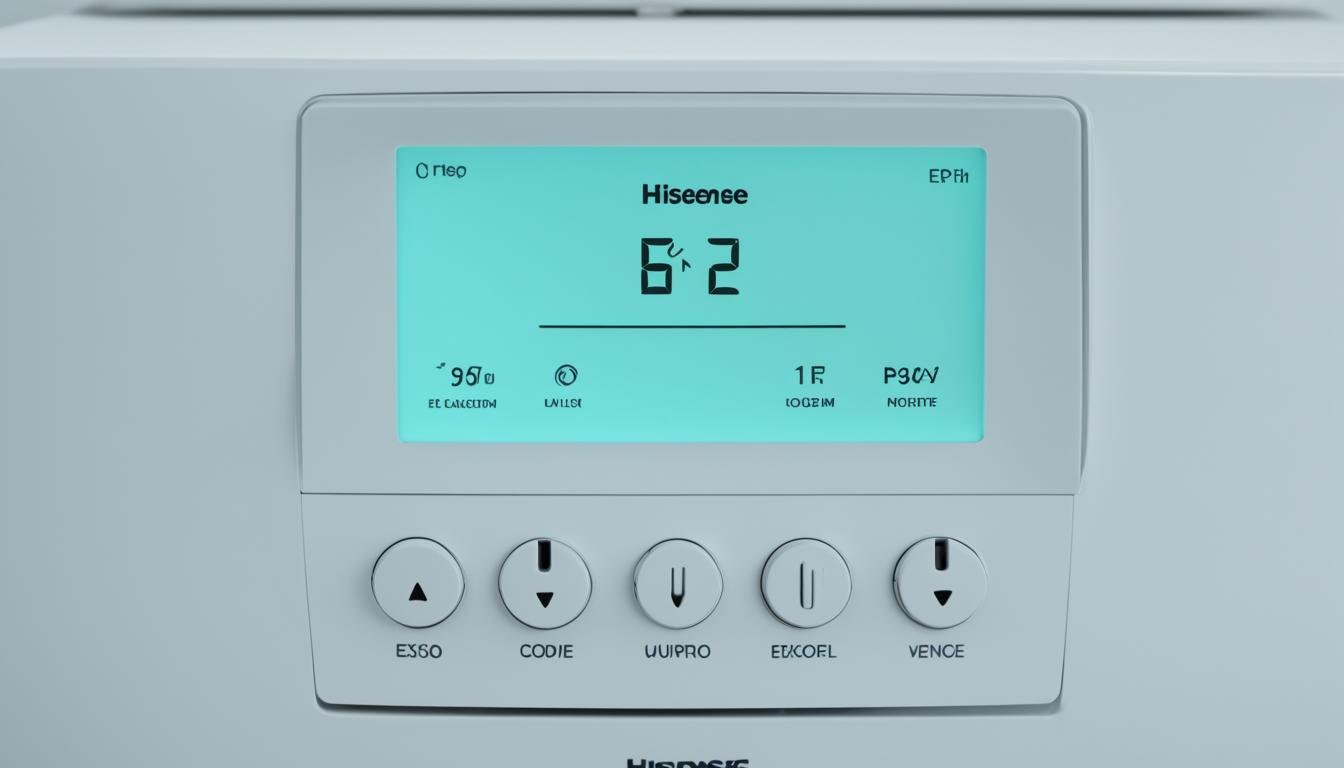
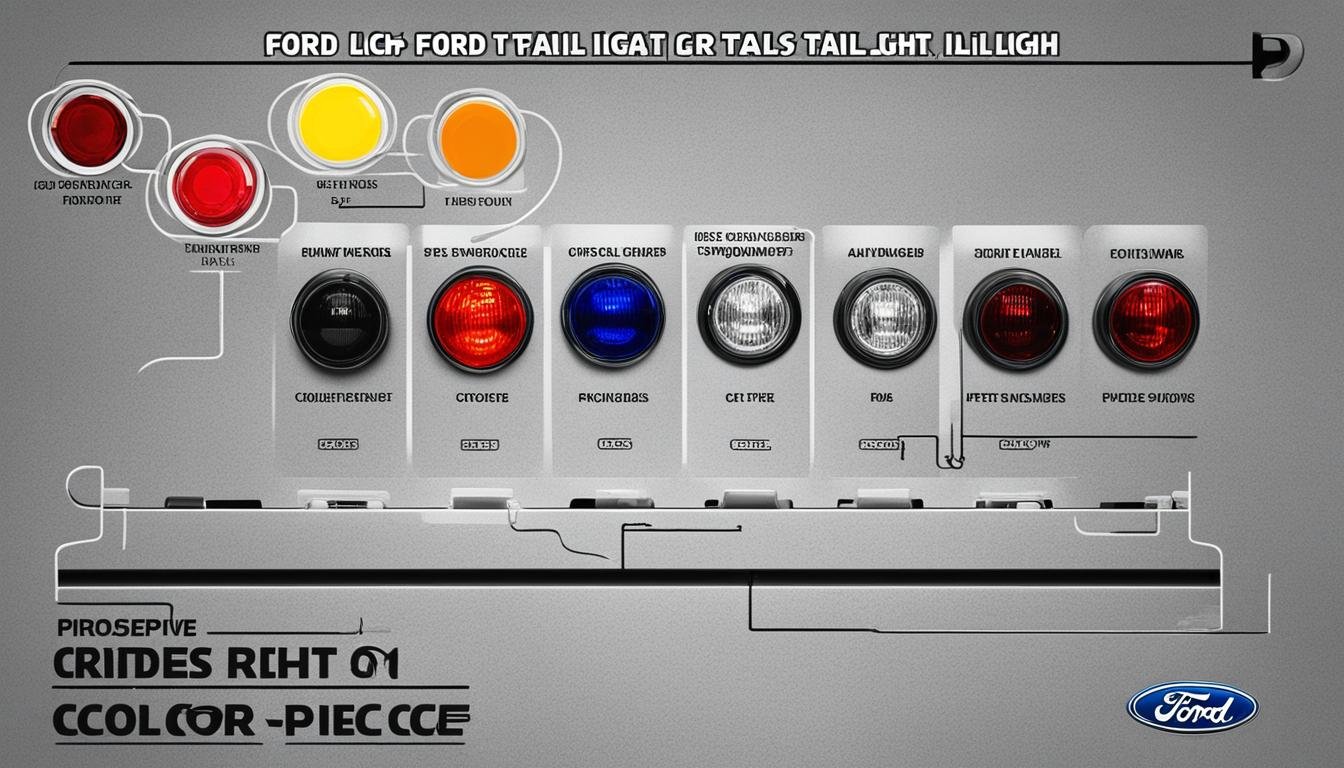
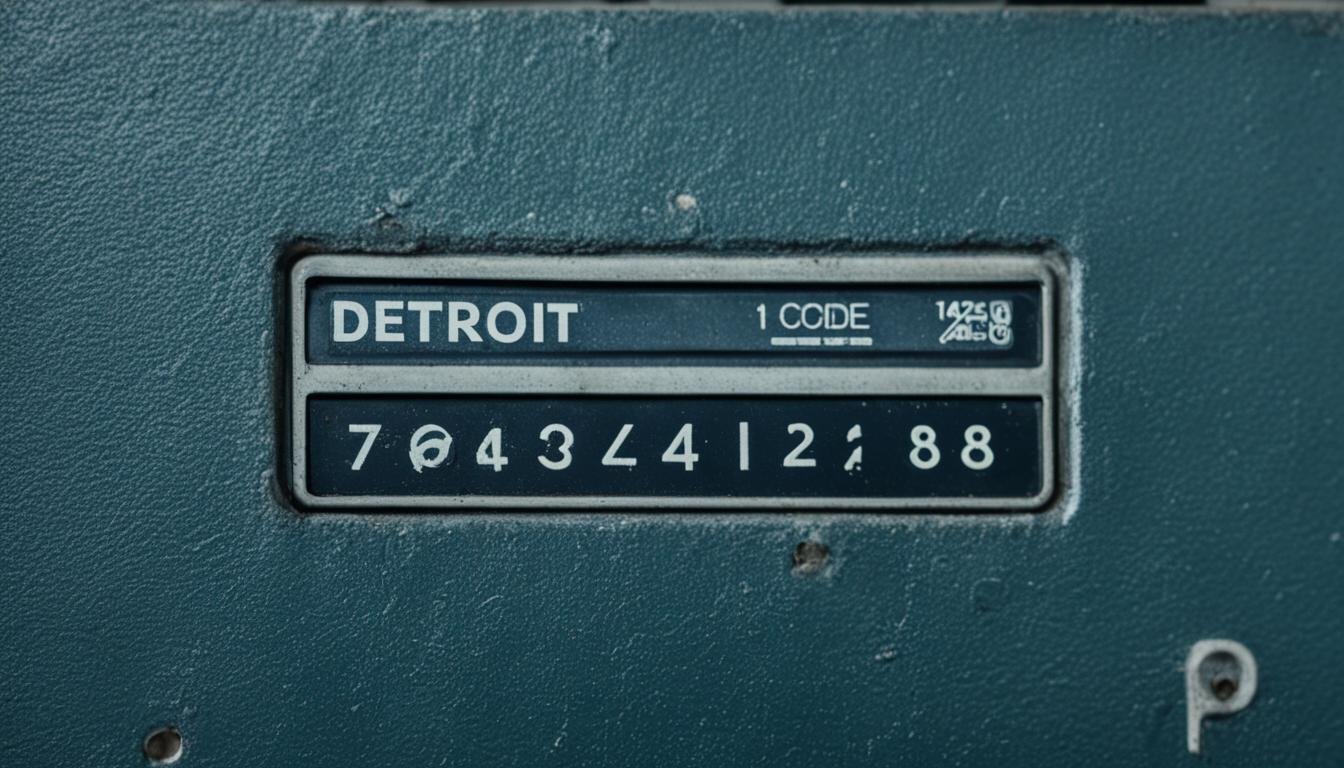

Leave a Reply